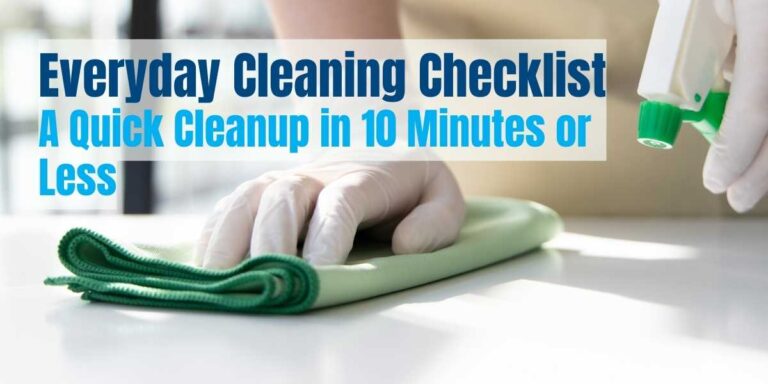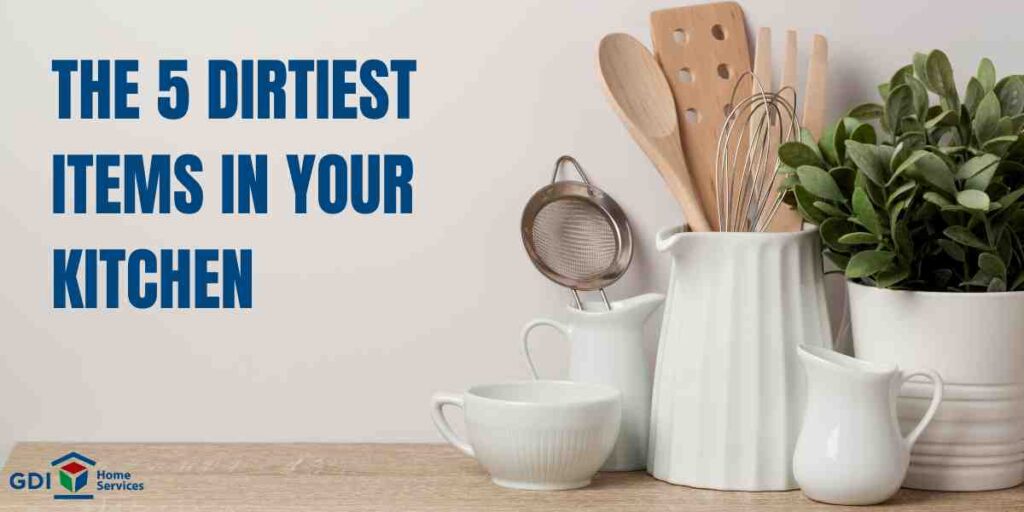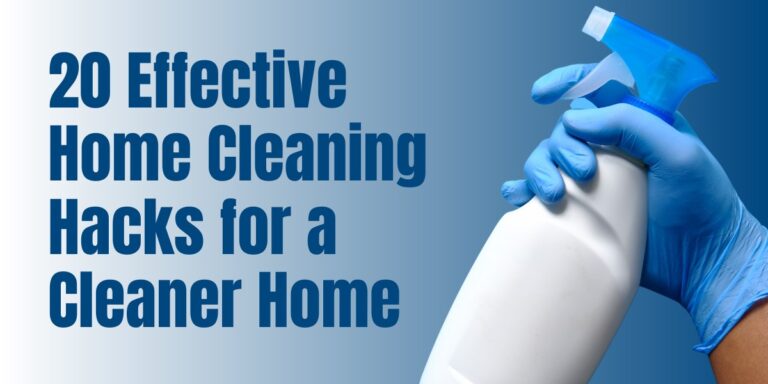
Everyday Cleaning Checklist – A Quick Clean in Ten Minutes or Less
Everyday life is busy, and you’re always on the go. It can be challenging to maintain

The kitchen is the heart of a home. It’s the spot in the home everyone spends tons of time in. Not only is it used for cooking, baking, eating, and drinking. It is also a common area often used for meaningful conversations, late-night snacks, early-morning coffee, and the occasional dance party. No wonder it gets dirty so quickly. Check out this list of the five dirtiest items in your kitchen, and learn how to clean them. A few of them might surprise you.
The dish sponge is the dirtiest item in your kitchen and likely your entire house. It is absorbent, and wet, and repeatedly cleans food, dirt, bacteria, and grime.
A very effective way to clean a dish sponge is to put it on the top rack of the dishwasher. Then, run it through a high heat and drying cycle. This should disinfect the sponge. Alternatively, soak your sponge in white distilled vinegar for 5-10 minutes to kill bacteria. Let it air dry after rinsing.

Your kitchen sink is used to wash all kinds of things including dishes, pots and pans, coffee pots, dirty hands, paintbrushes, kids’ toys, and more. When things need to be cleaned, you usually start at the kitchen sink.
An easy way to clean the kitchen sink is to use a clean cloth soaked in warm water and with a small amount of dish soap. Starting from the top, wipe down the sides, the bottom, and finally the drain. If you are looking to disinfect your sink and remove hard water stains. Use a sink cleaner or make a paste of baking soda and water and wipe all the surfaces with the paste. Then rinse the sink with some distilled white vinegar.

When preparing foods like raw meats, bacteria can easily be transferred from your hands to salt and pepper shakers or spice jars. Once the food is prepared, the salt and pepper shakers are often passed around the table, making them a highly touched surface where germs and bacteria can easily be transferred.
An easy way to remember to clean your salt and pepper shakers is to wipe them when you’re cleaning your kitchen table. Using a damp cloth with a mild disinfectant or a disinfectant wipe. Occasionally, the entire canisters should be cleaned. Empty the contents of the shakers or jars and soak them in hot water with dish soap. Steel mills should only need a quick rinse to ensure there are no remaining particles stuck in them. For dirty canisters soak overnight and use a toothpick or Q-tip to get into the small crevices and holes. Ensure the shakers are completely dry before refilling.

When is the last time you washed your can opener? Maybe you wiped it off because of a spill. But typically, can openers are quickly used, and then put away until the next use.
To clean a manual can opener dish soap and water should do the trick. If it’s particularly grimy, soak it in white vinegar for a few minutes, and use a cloth or toothbrush to clean the opener and wheels. Rinse and dry thoroughly.
For electric can openers. Ensure, it is unplugged, mix a 50/50 white vinegar and warm water solution. Add a couple of drops of dish soap. Wipe down the can opener and use a toothbrush to get into the cutting wheel, lever, and main body of the opener. Wipe with a damp cloth, and thoroughly dry to prevent rust.

The knives may be cleaned regularly but what about the block itself? Wooden knife blocks can be especially dirty if knives are put away slightly wet. The tiny slots can hide dirt, consistently be damp, and can be a great place for bacteria to grow.
To clean a wooden knife block, remove all the knives and
submerge the block in warm soapy dishwater. Use a pipe cleaner or bottle brush to clean inside all the openings. Rinse thoroughly and place it upside down to dry. Do not replace the knives until the block is completely dry. For extra disinfecting soak a piece of paper towel in white vinegar and wrap it around a butter knife and clean each knife slot. Wash with hot soapy water, rinse, and thoroughly let dry before replacing the knives.

Because they are often overlooked or forgotten about, these kitchen items are often the dirtiest in most kitchens. Luckily, they can be quickly and easily cleaned if you follow the above cleaning tips.
Does your kitchen need a deep cleaning? GDI Home Services provides home cleaning services. Build a free quote and add refrigerators, microwaves, ovens, or cupboards to your cleaning.
What do you think is the dirtiest item in your kitchen? Leave a comment.

Everyday life is busy, and you’re always on the go. It can be challenging to maintain

Keeping your home clean and organized can be overwhelming, but it doesn’t have to be. With

Do the stubborn stains on your carpet keep you up at night? Do you want to